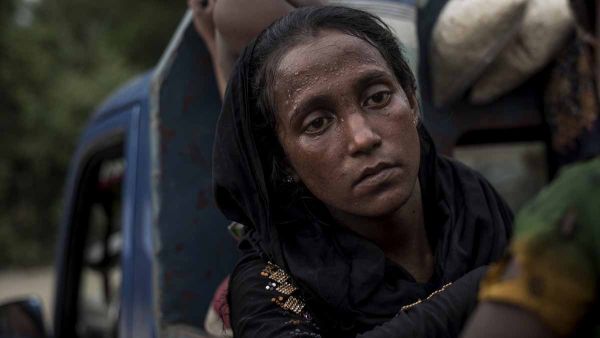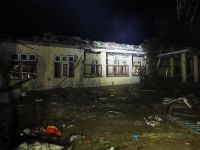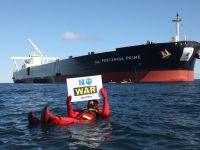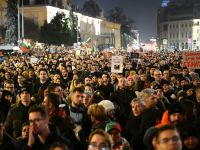After WWII, governments agreed that an organization was needed to alleviate the suffering of the millions who had been left stateless or otherwise displaced. The UN refugee agency, or the UNHCR, was established on the 1st January 1951 to, amongst other things, “improve the situation of refugees and to reduce the number requiring protection;” and admit “refugees to their territories, not excluding those in the most destitute categories.”
But the UNHCR now faces a monumental challenge in the face of the spread of COVID-19, at a time when the number of people who have been forced from their homes stands at over 70 million. In the early years of the UNHCR, Western governments focused on helping those in post-war Europe. But ethnic violence and national rivalries elsewhere in the world continued to leave more and more in need of international support.
To understand the problems now facing UNHCR we need to look at its recent history and structure. Like other UN agencies, such as the World Food Programme, the UNHCR is independent of the General Assembly. Nevertheless, it relies on more than 80% of its funding coming from those nations which make up the Assembly. The US is by the far the biggest donor, giving more than $1.6bn in 2019, almost four times more than the EU which is the second biggest donor.
the UNHCR now faces a monumental challenge in the face of the spread of COVID-19, at a time when the number of people who have been forced from their homes stands at over 70 million.
Due to this reliance on national donations, the agendas of the superpowers, particularly the US, often makes itself known through the outlook of the UNHCR. This can be seen in the people chosen to lead the agency. In 1986 Jean-Pierre Hocké took the helm of the agency and set about implementing reforms. Hocké, a car-salesman turned humanitarian, focused on the mass return of refugees. Soon proving unpopular – he threatened the cutting of rations to Ethiopians who turned down ‘voluntary repatriation’ – he left the agency after three years in a storm of allegations of corruption.
Throughout the 1990s the Commissioner was Sadako Ogata, a descendent of the Japanese Prime Minister Inukai Tsuyoshi. Ogata worked towards a form of humanitarianism that worked to send refugees back into the places they had left as soon as possible. Kurds fleeing Iraq during Operation Desert Storm, for instance, were encouraged to return to Iraq under the protection of a no-fly zone soon afterward. This new method of humanitarian relief, containment in camps before repatriation, is still a feature of the UNHCR’s work today.
Repatriation was supposed to, in the words of Shirley C. deWolf and quoted by the UNHCR, “give refugees a chance to break away from being victims of persecution and to become a genuine part of the solution.”
Repatriation was supposed to, in the words of Shirley C. deWolf and quoted by the UNHCR, “give refugees a chance to break away from being victims of persecution and to become a genuine part of the solution.” It also served as a means of placating right-wing governments who often rise to power on anti-immigration rhetoric. But it also allows economies to rebuild and familial and communal ties to be rekindled. As the UNHCR said in a 2018 report, “preferred solution in the majority of refugee situations.”
The preference for refugee returns is based on an outdated view of conflict. Kathleen Newland, co-founder of the Migration Policy Institute, told The New Internationalist last year that “the idea of return as the preferred solution was predicated on the idea that refugee flows were a temporary phenomenon… Those assumptions are not being borne out, so you have these very protracted situations of endless wars, unresolved conflicts, and autocratic governments that are firmly in place.”
Although frequently referred to as ‘voluntary repatriation’, there is often little choice given to refugees on whether to stay or to return. Threats of imprisonment, violence or the prospect of longer spells in squalid facilities mean that those who have left their homes are forced to return home sooner than they would otherwise wish.
Last year we saw how Turkey was forcing refugees into returning to Syria. One witness told Human Rights Watch that he was “deported with about 35 Syrians on a large bus. They handcuffed us and…they beat some of the men on the bus with truncheons when they asked to go to the toilet or for water. We all spoke with each other [and] no one wanted to go back to Syria." Others told HRW that they were forced to sign papers they were unable to read but they now believe to be repatriation papers.
A 2013 UNHCR report noted that the return of Rohingya refugees from Bangladesh to Myanmar in the early 1990s was “voluntariness… pushed to its absolute limits, possibly beyond recognition.”
Forced repatriations can have disastrous effects. A 2013 UNHCR report noted that the return of Rohingya refugees from Bangladesh to Myanmar in the early 1990s was “voluntariness… pushed to its absolute limits, possibly beyond recognition.” Three years after the report was published the world saw Myanmar murder thousands of Rohingya, destroy homes and villages, and force the exodus of around 700,000 people to Bangladesh.
A focus on the repatriation of those in refugee camps has meant that relatively little attention has been given to incorporating refugees into countries to which they arrive. This has meant that, very often, refugee facilities such as accommodation and hygiene facilities are inadequate. People spend years in places designed to provide short-term refuge.
authorities leave those seeking refuge in limbo, unable to enter a host country and take part in normal society, whilst also remaining too dangerous for them to return home.
Furthermore, in efforts to force refugees into a corner, governments have adopted policies that make life so unbearable that they decide to return. Under international law, a person seeking refuge cannot be forced to return to a country where they will be in danger. But authorities leave those seeking refuge in limbo, unable to enter a host country and take part in normal society, whilst also remaining too dangerous for them to return home. Currently, less than 1% of refugees become naturalized in a host country.
This deplorable history has led to the situation refugees now face whilst attempting to resist COVID-19. Cramped living conditions, little or no access to hygiene products and running water, and already weakened immune systems might cause untold suffering should the coronavirus appear in refugee camps, as it already has in some locations.
This is Part 1 of a two part series. The views expressed in this article do not necessarily reflect those of Al Bawaba News.









